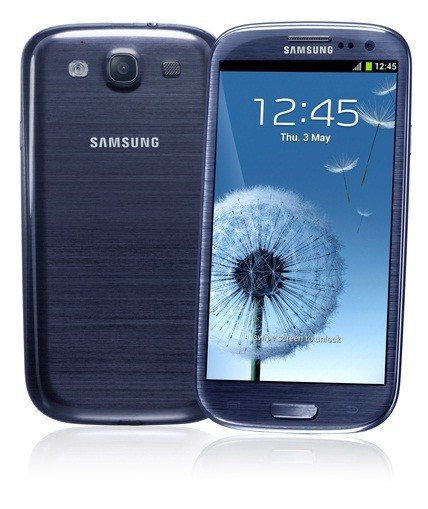Samsung Galaxy S3 Vs Galaxy Nexus: Two Android Smartphones Head-to-Head

Samsung Galaxy Nexus, the world's first smartphone to run on Android 4.0 (Ice Ctream Sandwich) OS and sport a HD Super AMOLED display was announced in October and followed by a market release beginning in Europe in November. The smartphone is equipped with all the latest technology from Google Wallet to Near Field Communication (NFC) tech and also features a software navigation button, a first for Android smartphones. One of the interesting features of the smarphone is Face Unlock, which allows users to unlock their smartphone by simply smiling into the camera.
Meanwhile, Samsung introduced its next-gen Galaxy smartphone - the Galaxy S3 - on 3 May. The smartphone will hit UK markets on 30 May and the US later this summer. Although the company has not announced pricing details, it has confirmed the smartphone will go on sale with 296 carriers in 145 countries. The smartphone will connect at 4G speeds in compatible countries. The smartphone offers Near Field Communication (NFC) technology and is equipped with an interesting feature, a Siri-like voice-activated personal assistant called S Voice.
Check out how the two Android smartphones do against each other
Display: Samsung's third generation Galaxy features a 4.8in HD Super AMOLED display, with a resolution of 720x1280 pixels. The Galaxy S3, according to Samsung, provides an ergonomic and comfortable user experience, through what the manufacturer calls a human-centric design process. The Samsung Galaxy Nexus features a 4.65in Super AMOLED Contour display with a resolution of 720x1,280 pixels. Samsung claims the Galaxy Nexus is the first smartphone to feature a 4.65in display.
Dimension: The Galaxy S3 measures 136.6x70.6x8.6mm and weighs marginally less than the Galaxy Nexus at 133g, which measures 135.5x67.9x8.9mm and weighs 135g.
Operating System: Both smartphones run on Android 4.0 (Ice Cream Sandwich).
Processor: The Samsung Galaxy S3 will be powered by a 1.4 GHz Exynos 4 quad-core processor with twice the processing capabilities of the 45nm process-based Exynos 4 dual-core processor. A test conducted by Slashgear suggested the quad-core Exynos process was powerful and capable enough of taking on its market rivals. The S3 has 1GB of RAM.
The Galaxy Nexus is powered by a 1.2GHz dual-core Cortex-A9 processor with a TI OMAP 4460 chipset and the smartphone packs 1GB of RAM. Samsung claims the ultra-fast 1.2GHz dual-core processor provides superior power and speed which further allows users to take full advantage of the enhanced multitasking capabilities of Galaxy Nexus.
Camera: The Galaxy S3 will sport a primary camera of eight megapixels with auto-focus and LED flash. The camera also has a technology called Zero-Lag Shutter Speed that allows users to capture moving objects. The smartphone also features a 1.9 megapixel front-facing camera which can record HD videos at 30 frames per second. The Galaxy S3 also has a feature called Burst Shot, which allows users to capture 20 continuous frames.
The Galaxy Nexus features a redesigned camera which introduces panorama mode, zero-shutter lag and effects including silly faces and background replacement. The smartphone sports a five megapixel primary camera with auto-focus and LED flash. The camera can capture videos in 1080p at 30 frames per second. There is a 1.3 megapixel front-facing camera.
Connectivity: The Galaxy S3 offers Wi-Fi a/b/g/n, Wi-Fi HT40 and Bluetooth version 4.0, as well as Near Field Communication (NFC). The Galaxy Nexus supports Wi-Fi 802.11 a/b/g/n, dual-band, DLNA, Wi-Fi hotspot and Bluetooth version 3.0 with A2DP. It also offers NFC.
Storage Capacity: The Galaxy Nexus offers internal storage options of 16GB and 32GB.The Galaxy S3 offers three internal memory storage options of 16/32/64GB (the latter is not yet available) and supports microSD card.
Power and Battery:The Galaxy S3 is powered by a 2,100mAh battery. The Galaxy Nexus is powered by a 1750mAh battery.
© Copyright IBTimes 2025. All rights reserved.





















